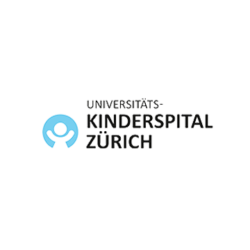Meeting requirements
It is thanks to a far-sighted gesture from a generous man, Conrad Cramer, that the Eleonorenstiftung foundation came into being in 1868. It has gone on to become the biggest university children’s hospital in Switzerland and one of the leading centers for medical care for children and adolescents in Europe. University Children’s Hospital Zurich now has roughly 2,300 committed staff who dedicate themselves to the well-being of 100,000 young patients each year, from their very first day of life up to their 18th year.
The electronic patient record in d.3ecm is consistently geared toward the patient treatment process.
Michael Ryl
Project Manager for Hospital Management
University Children’s Hospital Zurich
Nothing is as important to parents as the health of their child. Families and parents therefore need quick and above all competent help when illnesses arise. University Children’s Hospital Zurich has taken on this role. The fact that its treatment and care of its small patients is held in such high international regard can be traced back not only to its medical expertise, but also the efficient processes within the hospital. The basis for that is its highly integrated IT environment, which was enhanced with the Enterprise Content Management system d.3ecm from d.velop. At the core of this comprehensive software rollout by adeon ag were the electronic patient record, the personnel record and a variety of other clinic-related documents that require audit-proof archiving.
Initial situation
In terms of process reliability, efficiency and stability, a value creation chain cannot prosper without support from intelligent IT environments. The same applies to medical and administrative patient support at hospitals. To give the roughly 100,000 annual patients at the University Children’s Hospital Zurich the best treatment and care possible, its 2,300 staff members rely on a highly integrated network of specialist applications, business management systems and medical devices. The central hub for all issues related to the medical history of its patients is provided by the hospital information system (HIS) CGM PHOENIX. The core application transparently collates practically every piece of information about the treatment process in one location and, where necessary, provides direct system access from special applications, such as the radiology or laboratory information systems. Its only weak point was in handling paper-based and electronic documents in compliance with auditing requirements. “Since the inauguration of the University Children’s Hospital Zurich in 1874, our patient numbers have multiplied. The associated consequences do not just affect our infrastructural requirements, but have also meant a rapid increase in the number of patient records and treatment documents. We will gradually expand the d.3ecm’s area of application,” explains Michael Ryl, Project Manager for Hospital Management at University Children’s Hospital Zurich.
Despite the access to external archives and ability to manage large numbers of electronic documents in the HIS, the IT-supported restructuring and digitization of the information flow was inevitable. In 2012, Michael Ryl and his team began to search for a suitable software foundation: “From the very start, we had a variety of departments in mind. For instance, we wanted not only our medical departments but also our HR and accounts-payable departments to be supported in their daily work with efficient Enterprise Content Management (ECM),” says Ryl of their vision. The resulting catalog of requirements focused on comprehensive DMS and workflow functionality and the ability to integrate and interact with third-party systems. The new solution was intended to serve as a mission-critical, audit-proof source and storage system for document-based hospital processes in every related application in the specialist areas. Following an evaluation phase, University Children’s Hospital Zurich chose d.3ecm from d.velop and the implementation partner adeon ag based in Altendorf, Switzerland.
On the path towards electronic patient records
The hospital-wide ECM project started in 2012 with the introduction of electronic patient records. Paper-based documents produced over the course of treatment or while admitting the patient were to be managed in a central record with electronic documents from other specialist applications, databases or file servers. “The complexity of the project was not just due to the amount of paper-based records to be transferred to the digital d.3ecm environment. Alongside that, a huge variety of contact points with upstream and downstream systems had to be defined and gradually implemented. The plan was ultimately for each of the roughly 50 specialist divisions to be able to access their relevant case information at the push of a button,” explains Michael Ryl. Another key requirement was the visualization of new records. With more than 1,000 users, care staff and doctors from nearly every specialist division used the hospital information system data and various applications with content displayed by accessing the HIS directly in their daily work. The electronic record therefore had to be accessed directly from the core application. The solution: every document in the digital record is integrated and displayed across all media on a new “tab” in the HIS “Archive Docs” patient record. Users can find their desired content using keywords, case numbers or full-text searches.
The implementation
The electronic patient record in d.3ecm is consistently geared toward the patient treatment process. As the first step, patients are recorded in the administrative system when they are admitted. This master information is automatically transferred to the HIS and d.3ecm through an interface, and d.3ecm then creates a patient record and case file. If the patient data is already available, only a new case file is created. Over the course of the treatment, any scanned documents and electronic documents from the integrated specialist applications are archived and stored in an audit-compliant record structure using the patient case or number. Such documents may include anything from findings, diagnoses and laboratory reports to administrative information and concluding reports.
The scanning process takes place in different ways. Any relevant documentation shown by patients on their arrival or emergency reports are promptly scanned by the responsible secretarial staff during admittance so that the content can be accessed by all the specialist areas immediately via the HIS. Paper documents that reach the archive through batch-based scanning processes (such as registration forms or care documentation) are digitized using high-performance scanners in the medical history archive department.
The benefit for efficiency: HIS documents that need to be signed to be valid (preoperative information, for example) are already printed out with clear patient information in the form of a barcode, which ensures that the form is automatically stored correctly during subsequent scanning. Likewise, each archived document is provided with a QR code (2D barcode) as a kind of “archive stamp.” This code clearly distinguishes the document as an “archive copy” whenever it is printed out. “If a case file is printed out, the 100-page threshold is quickly reached. Now, if a page is removed from such a batch it can easily be reassigned to the right document or patient thanks to the ‘archive stamp’ QR code,” explains Ryl of the principle.
Introduction of an electronic HR record
The second instance of the hospital-wide ECM also focuses on a document-intensive area: HR documents. In a stringently protected d.3ecm environment, the HR department now manages all its formerly paper-based documents in transparent and structured electronic records. The design is based on the overall history of the staff member – from contracts, through payment and insurance statements, to workforce plans, time sheet recording and monthly salaries. “Many staff members at our clinic have different, legally distinct employment contracts. With that in mind, we chose to use social insurance numbers, which are available thanks to the direct integration of the HOSPIS HR management system into d.3ecm, as unique characteristics for indexing,” says Ryl, giving an insight into a useful trick. Monthly salary cycles are also transferred automatically, which drastically reduces the amount of paper produced. Following the time-intensive digitization of all the HR records and their integration in the software, the hospital is now planning for process optimizations. One example: they plan to store documents that still require scanning in d.3ecm directly from the applications in the future.
No more paper mountains
The third instance of the archive concept deals with “HISPI documents”; that is, content of a commercial or legal nature that therefore has to be managed in compliance with auditing requirements. This “internal document area” features a stringent authorization concept. With the aid of “SQL table editors” developed by adeon ag, staff are given different rights to perform CRUD operations (Create, Read, Update, Delete) directly from the d.3ecm client. Documents from clinical chemistry and the laboratory center form a central document hub in this section. Information that requires regular certification and accreditation is stored here, along with other data.
To ensure we get the appropriate permissions for our highly complex analysis procedures, our process manuals, procedural instructions and even logs for machine maintenance need to be updated in recurring intervals and then read by the people that they affect. We achieve the latter with internal d.3ecm workflows.
Michael Ryl
Project Manager for Hospital Management
University Children’s Hospital Zurich
A second internal area focuses on information sheets, manuals, forms and guides that are used in their daily work and that need to be close to hand when questions arise – for instance, the operating instructions for an infusion pump or a special care guide. Designed as an information point for “public” documents, the “Web Integration Viewer” from adeon ag allows them to search for d.3ecm content and display it via an extranet. The external area of the “HISPI documents” instance can be accessed by a large number of staff and business partners of the children’s hospital through an extranet portal.
A constantly growing ecosystem
After just one year of productive use, the ECM solution was managing 3.4 million documents – with a strong upward trend. “We still have some way to go. On the one hand, we still have a number of other peripheral systems that we want to supply data to the electronic patient and personnel records directly in the future. On the other, we want to gradually expand the d.3ecm’s field of application,” says Michael Ryl of their plans.
In the meantime, the children’s hospital has added a contract archive and separate archives for all management board and foundation documents alongside the HISPI documents. It has also implemented the d.velop Life Science solution in some initial laboratories, and is currently rolling out electronic invoice processing.
The project partner:
adeon ag is a committed team of highly-qualified and experienced specialists who develop and implement innovative solutions in the fields of document management, electronic archiving and workflow (Business Process Management, BPM). Sustainable process optimizations need a competent partner. The adeon ag team applies its knowledge and many years of experience in a systematic way to closely analyze problems, define in-depth concepts and precisely coordinate their implementation. adeon ag is the competence center for ECM solutions for d.velop and, in its role as managing distributor, is responsible for the markets of Switzerland and the Principality of Liechtenstein.

